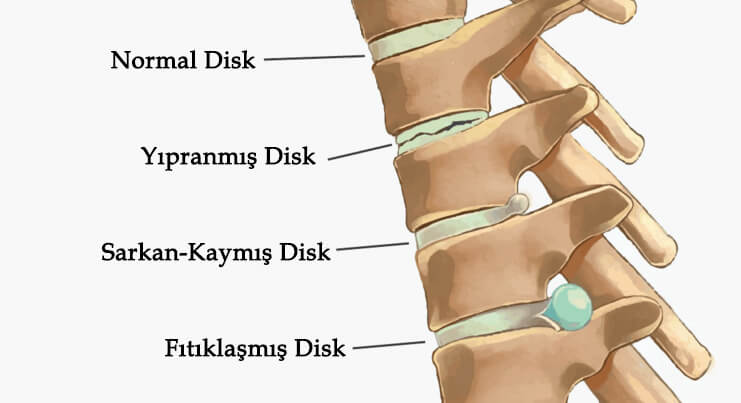
Symptoms of Lumbar Hernia
Low back pain is a common complaint in our society. Even if not every person himself/herself, someone close to him/her suffers from low back pain. Lumbar hernia is almost can affect anyone. It is most common in people aged 30-50, who sit a lot, do little or no sports, and lift heavy loads every day. In this article, you can find information about herniated disc treatment and how herniated disc is diagnosed...
Herniated discs can occur in young and sporty people, although the incidence is lower than in other people. Normally, the intervertebral discs of the spine It acts as a kind of shock absorber, responsible for its mobility. In the case of a herniated disc, there is either slippage or rupture of the disc.
Symptoms of a herniated disc:
Symptoms can vary depending on the severity, type and shape of a herniated disc. Some events are not noticed by the patient at all. For others, numbness or It may be accompanied by symptoms of pain or damage, such as paralysis, or in very severe cases, severe irritation symptoms in the form of blisters and rectal disorders.
Typically, patients suffer from sudden back pain, which becomes more severe, especially when the spine is loaded. In addition, in the spine area usually have hardened muscles.
If the lumbar spine is affected, the pain often radiates to the buttocks or legs and/or the patient feels tingling in the legs. Pain often occurs when you cough or it gets worse when you sneeze.
In the case of a herniated disc of the cervical spine, those affected primarily suffer from neck pain radiating into the arms and back of the head, depending on the degree of the disease. they complain. In extreme cases, they may not be able to move at all. Of course, not every pain is caused by a hernia. However, pain that lasts longer than five to seven days or If you have back pain that radiates to the legs or arms, a specialist doctor should definitely examine you for a herniated disc.
How is a herniated disc diagnosed?
One of the most helpful aspects of the initial diagnosis is the patient's history. Your physician will be able to determine exactly where the pain is located, how the patient feels (e.g., stabbing, piercing ...), how long the pain has been present, how it started, and if necessary, tomography, etc. imaging methods the disease is diagnosed by referral.
Bel fıtığı tedavisi:
Bel fıtığı mutlaka ameliyatla sonuçlanmaz. Aksine: Etkilenenlerin neredeyse yüzde 90'ında, semptomlar ilaç tedavisi ve fizik tedavi ile geçebilir. Altı ila sekiz hafta sonra semptomlar genellikle tamamen kaybolur.
Drug treatment of herniated disc:
First, the doctor prescribes painkillers and anti-inflammatory drugs. He takes the pressure of the pain away from the patient and specifies the actions the patient should avoid and recommends a posture that reduces hernia pain. Heat applied to the area of pain is also known to help. Heat stimulates blood circulation and also relaxes the muscles. Physiotherapy is also recommended in addition to medication if necessary.
Surgical treatment of herniated disc:
In surgical treatment, the pain is very pronounced and medication does not work. The patient's pain is at a level that cannot be relieved even with medication. Paralysis, movement, In cases of severe difficulty even in walking and sitting, surgical treatment is recommended depending on the patient's condition.
For information and treatment, you can contact Associate Professor Dr. Ali Yilmaz here.